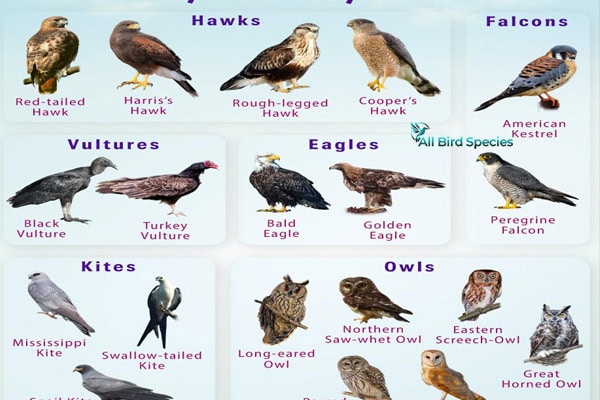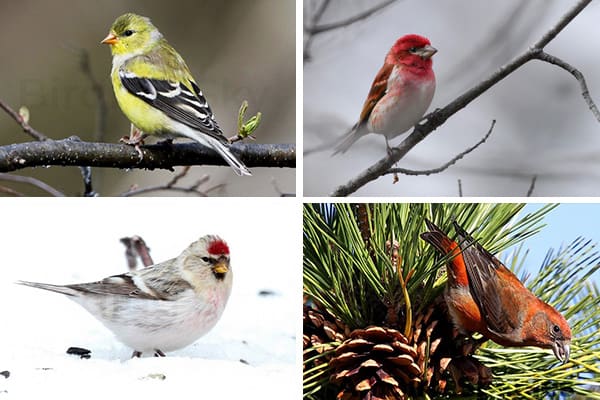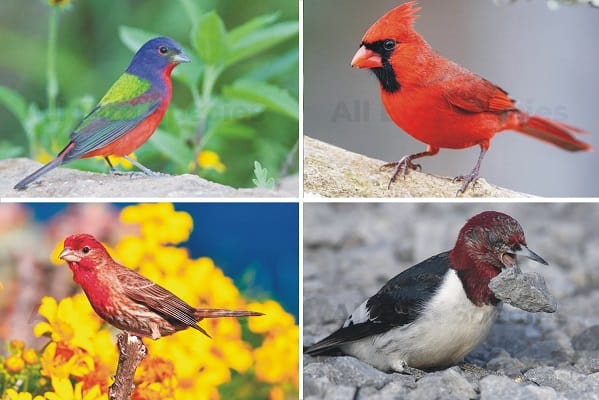22 Birds of Prey in Pennsylvania (ID Guide With Pictures)
Pennsylvania is home to a diverse array of birds of prey, known for their impressive hunting skills, keen eyesight, and essential roles in the ecosystem. These birds, including hawks, owls, and falcons, can be observed soaring through the skies or perched silently in trees, often serving as indicators of environmental health. This article explores various species of birds of prey in Pennsylvania, detailing their characteristics, behaviors, and roles in the ecosystem.
1. Red-tailed Hawk
- Size: 18-26 inches (46-66 cm)
- Weight: 1.5-3.5 lbs (0.68-1.6 kg)
- Lifespan: 10-15 years in the wild
- Diet: Small mammals, birds, and reptiles
The Red-tailed Hawk is one of the most common raptors in North America and easily recognizable by its distinctive red tail. In Pennsylvania, they are often seen perched on trees or utility poles, scanning the ground for prey. Their hunting technique involves a combination of soaring and hovering, allowing them to spot small mammals from great heights.

These hawks are particularly adaptive and can thrive in various habitats, including forests, fields, and urban areas. Their diet primarily consists of small mammals like rabbits and rodents, but they will also eat birds and reptiles. The Red-tailed Hawk’s impressive wingspan and powerful talons make it a formidable predator.
2. Sharp-shinned Hawk
- Size: 9-13 inches (23-33 cm)
- Weight: 3-8 oz (85-225 g)
- Lifespan: 3-5 years in the wild
- Diet: Small birds, especially songbirds
The Sharp-shinned Hawk is the smallest hawk in North America and is known for its agility and speed. In Pennsylvania, these birds are typically found in wooded areas, where they hunt small birds. Their slender bodies and long tails aid in maneuvering through dense foliage, making them adept at surprising their prey.

These hawks often employ a strategy of ambush, waiting quietly before darting out to catch unsuspecting birds. Their presence is especially noted during migration seasons when they can be seen moving through various habitats in search of food. Despite their small size, Sharp-shinned Hawks are fierce hunters and play a crucial role in controlling songbird populations.
3. Cooper’s Hawk
- Size: 14-20 inches (36-51 cm)
- Weight: 1-2 lbs (0.45-0.91 kg)
- Lifespan: 5-10 years in the wild
- Diet: Small to medium-sized birds
The Cooper’s Hawk, similar in appearance to the Sharp-shinned Hawk, is slightly larger and has a more robust body. These birds prefer habitats with a mix of open areas and trees, often found in suburban settings where they hunt small birds. Their long tails and short wings allow for quick, agile flight, making them highly effective hunters.

These Birds of Prey in Pennsylvania are known for their persistence and adaptability in hunting. They often chase down their prey through thick branches and bushes, showcasing their remarkable flying skills. Their diet primarily consists of smaller birds, which they capture with incredible speed and precision.
4. Northern Harrier
- Size: 16-20 inches (40-51 cm)
- Weight: 1-2 lbs (0.45-0.91 kg)
- Lifespan: 3-5 years in the wild
- Diet: Small mammals, birds, and insects
The Northern Harrier is a unique raptor, easily recognizable due to its low flying style and distinctive facial disk, which helps it locate prey. In Pennsylvania, these hawks are often found in open fields, marshes, and grasslands, where they use their keen eyesight to spot small mammals and birds.

These birds are known for their hunting behavior, which often involves flying just above the ground, scanning for movement. Their diet includes a variety of small mammals and birds, making them versatile hunters. The Northern Harrier’s unique flight pattern and hunting techniques make it a fascinating species to observe in its natural habitat.
5. Red-shouldered Hawk
- Size: 15-24 inches (38-61 cm)
- Weight: 1.5-2.5 lbs (0.68-1.13 kg)
- Lifespan: 10-15 years in the wild
- Diet: Small mammals, amphibians, and reptiles
The Red-shouldered Hawk is known for its striking plumage and loud call, often heard in wooded areas throughout Pennsylvania. They prefer habitats near water sources, such as swamps and rivers, where they can hunt for small mammals and amphibians. Their distinctive red shoulders and barred wings make them easily identifiable.

These Birds of Prey in Pennsylvania hawks are skilled hunters, often using a method called “perch and pounce,” where they sit quietly on a branch before launching themselves toward their prey. Their diet is diverse, including small mammals, reptiles, and amphibians, which they skillfully capture with their sharp talons.
6. Broad-winged Hawk
- Size: 12-24 inches (30-61 cm)
- Weight: 1-2 lbs (0.45-0.91 kg)
- Lifespan: 10-15 years in the wild
- Diet: Small mammals, birds, and insects
The Broad-winged Hawk is a medium-sized hawk known for its migratory behavior. During migration, these birds can often be seen in large flocks, known as kettles, soaring in the thermals. In Pennsylvania, they are typically found in deciduous forests, where they hunt for small mammals and birds.
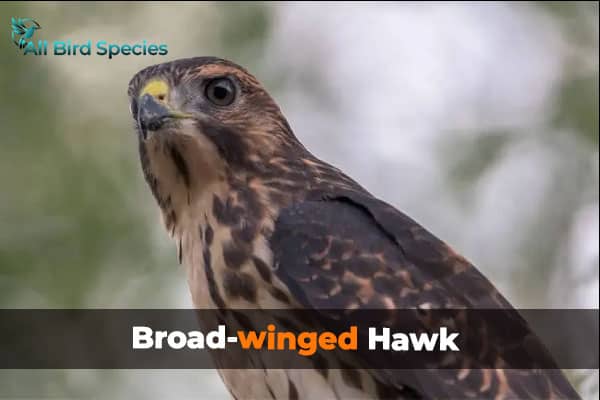
These hawks are known for their distinctive call, a series of high-pitched whistles that can be heard in the spring and summer. They primarily feed on small mammals, birds, and large insects, using their keen eyesight to spot prey from above. Their migratory patterns make them an exciting species for birdwatchers to observe during the fall and spring months.
7. Rough-legged Hawk
- Size: 20-24 inches (51-61 cm)
- Weight: 1.5-3.5 lbs (0.68-1.6 kg)
- Lifespan: 10-15 years in the wild
- Diet: Small mammals, particularly lemmings
The Rough-legged Hawk is a large raptor that breeds in the Arctic and migrates south for the winter. In Pennsylvania, they can be seen during the colder months, often hunting in open fields or along roadsides. Their plumage is variable, with some individuals displaying dark coloration while others are lighter, allowing them to blend into different environments.
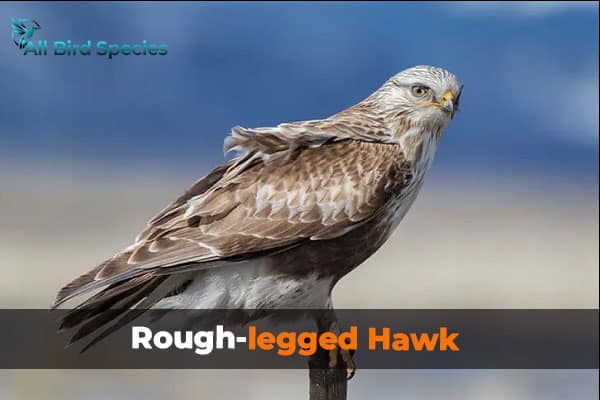
These Birds of Prey in Pennsylvania hawks are notable for their hunting technique, which often involves hovering in the air while searching for prey. Their diet primarily consists of small mammals such as lemmings, which they capture with their sharp talons. The Rough-legged Hawk’s migration patterns and adaptability to different habitats make it a remarkable species to observe.
8. Osprey
- Size: 20-26 inches (51-66 cm)
- Weight: 1.5-4 lbs (0.68-1.8 kg)
- Lifespan: 7-10 years in the wild
- Diet: Fish
The Osprey is a large bird of prey known for its incredible fishing skills. Found near bodies of water, these raptors are often seen diving into lakes and rivers to catch fish. Their distinctive white head and dark eye stripes make them easily recognizable, and they are a favorite among birdwatchers.
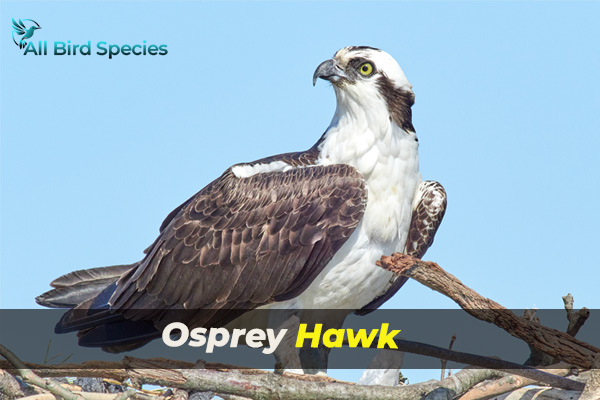
Ospreys have unique adaptations for fishing, including reversible toes and sharp talons, which allow them to grasp slippery fish. Their diet is almost exclusively fish, making them an important indicator of aquatic ecosystem health. Watching an Osprey dive and emerge with a catch is a thrilling experience for nature enthusiasts.
9. Great Horned Owl
- Size: 18-25 inches (46-64 cm)
- Weight: 3-6.5 lbs (1.4-3 kg)
- Lifespan: 15-20 years in the wild
- Diet: Mammals, birds, and reptiles
The Great Horned Owl is one of the most recognizable owls in North America, known for its tufted “horns” and striking yellow eyes. In Pennsylvania, these powerful predators inhabit a variety of environments, from forests to urban areas. They are highly adaptable and can thrive in different habitats.
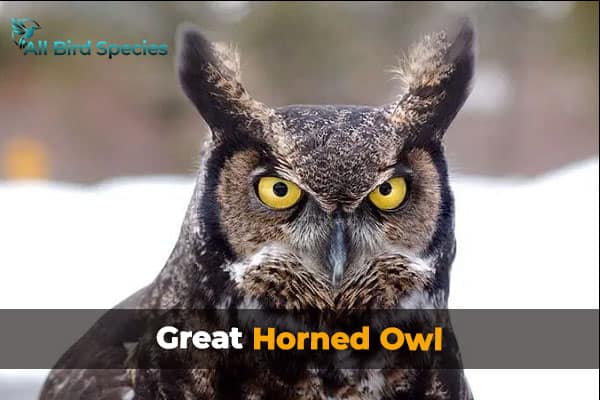
These Birds of Prey in Pennsylvania are skilled hunters, often preying on small mammals such as rabbits and squirrels, but they will also hunt birds and reptiles. Their distinctive hooting calls can be heard during the night, and they are often solitary hunters, using their exceptional hearing and vision to locate prey in darkness.
10. Barred Owl
- Size: 16-25 inches (40-63 cm)
- Weight: 1.5-2.5 lbs (0.68-1.13 kg)
- Lifespan: 4-10 years in the wild
- Diet: Small mammals, birds, and amphibians
The Barred Owl is known for its characteristic “Who cooks for you? Who cooks for you all?” call, which echoes through the forests of Pennsylvania. These owls prefer dense woodlands and are often found near water sources. Their mottled brown and white plumage helps them blend into their surroundings.

Barred Owls are opportunistic hunters, preying on a variety of small mammals, birds, and amphibians. They are known for their quiet flight, allowing them to approach prey undetected. Their adaptability and distinctive calls make them a fascinating species to observe in the wild.
11. Long-eared Owl
- Size: 13-16 inches (33-40 cm)
- Weight: 4.5-10.5 oz (127-300 g)
- Lifespan: 5-10 years in the wild
- Diet: Small mammals, particularly voles
The Long-eared Owl is a medium-sized owl known for its long ear tufts and striking yellow eyes. Found in wooded areas and around fields in Pennsylvania, these owls are often elusive, relying on their excellent camouflage to avoid detection. Their distinctive appearance and haunting calls add to their mystique.

These owls primarily hunt small mammals, particularly voles, using their keen hearing to locate prey in dense vegetation. They are mostly nocturnal and spend the day roosting in trees or dense shrubs. The Long-eared Owl’s secretive nature and unique hunting habits make it a captivating species for birdwatchers.
12. Eastern Screech-Owl
- Size: 6-10 inches (15-25 cm)
- Weight: 4-8.5 oz (113-240 g)
- Lifespan: 3-8 years in the wild
- Diet: Insects, small mammals, and birds
The Eastern Screech-Owl is a small, adaptable owl found throughout Pennsylvania. Their coloration can vary from gray to reddish-brown, providing excellent camouflage against tree bark. These owls are known for their distinctive trilling and whinnying calls, which can be heard at night.
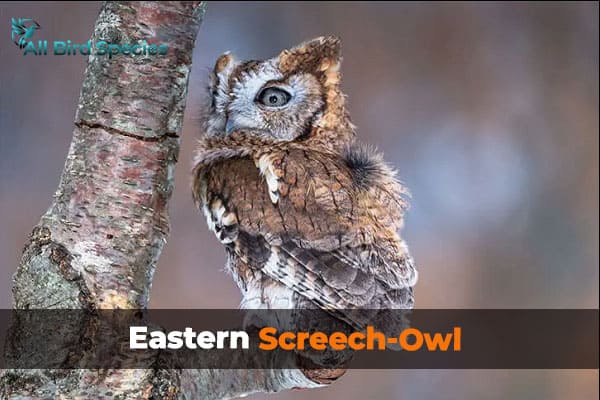
Eastern Screech-Owls are opportunistic feeders, preying on insects, small mammals, and birds. They often hunt from a perch, swooping down to catch their prey. Their small size and ability to thrive in urban areas make them a common sight in suburban neighborhoods, where they can often be heard calling at dusk.
13. Snowy Owl
- Size: 20-28 inches (51-71 cm)
- Weight: 3-6.5 lbs (1.4-3 kg)
- Lifespan: 10 years in the wild
- Diet: Small mammals, particularly lemmings
The Snowy Owl is one of the most iconic owls, known for its striking white plumage and large size. While primarily a resident of the Arctic, these owls occasionally migrate south to Pennsylvania during winter months. Their stunning appearance and rarity make them a favorite among birdwatchers.
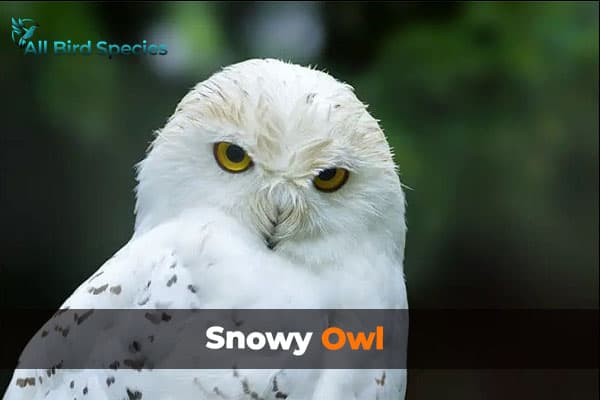
Snowy Owls primarily hunt small mammals, particularly lemmings, and their diet can change based on prey availability. They are known for their powerful flight and keen eyesight, which help them spot prey from a distance. Observing a Snowy Owl in its natural habitat is a remarkable experience for any nature enthusiast.
14. American Barn Owl
- Size: 12-20 inches (30-51 cm)
- Weight: 1.5-2.5 lbs (0.68-1.13 kg)
- Lifespan: 4-5 years in the wild
- Diet: Small mammals, especially rodents
The American Barn Owl is easily recognizable by its heart-shaped face and pale plumage. These owls prefer open habitats, including farmlands and grasslands, where they hunt for small mammals. Their unique appearance and silent flight make them fascinating creatures to observe.
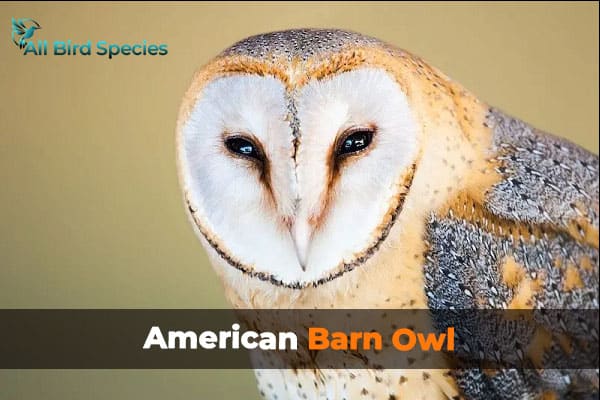
Barn Owls are known for their exceptional hearing, which allows them to locate prey even in complete darkness. Their diet primarily consists of rodents, making them valuable for controlling pest populations in agricultural areas. Watching a Barn Owl glide silently through the night is a magical experience.
15. Northern Saw-whet Owl
- Size: 7-8 inches (18-20 cm)
- Weight: 2-5 oz (56-140 g)
- Lifespan: 4-8 years in the wild
- Diet: Small mammals, particularly mice
The Northern Saw-whet Owl is one of the smallest owls in North America, known for its round face and bright yellow eyes. Found in Pennsylvania’s forests and wooded areas, these owls are often elusive and difficult to spot. Their distinctive “saw-whet” call is a key identifier.
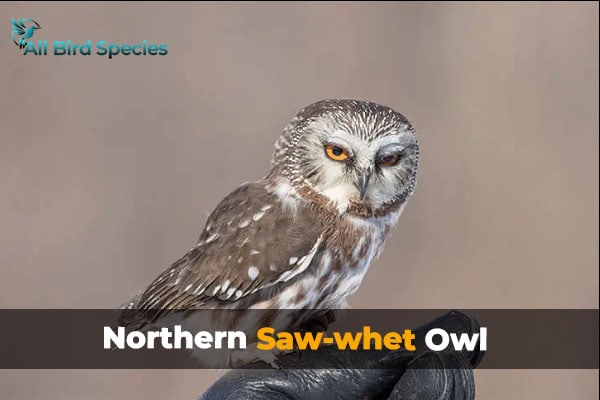
These Birds of Prey in Pennsylvania primarily hunt small mammals, especially mice, using their excellent hearing to locate prey. They are mostly nocturnal and rely on their camouflage to blend into their surroundings. The Northern Saw-whet Owl’s small size and secretive nature make it a captivating species for bird enthusiasts.
16. Short-eared Owl
- Size: 13-17 inches (33-43 cm)
- Weight: 10-20 oz (280-570 g)
- Lifespan: 3-5 years in the wild
- Diet: Small mammals, particularly voles
The Short-eared Owl is a unique species often found in open fields and grasslands. Known for its distinctive short ear tufts, this owl is a master of hunting in low light. In Pennsylvania, they are often seen hunting during the day, a behavior that sets them apart from many other owl species.
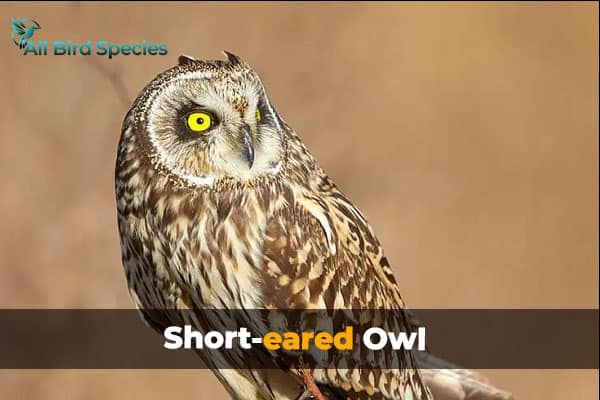
These owls primarily feed on small mammals, particularly voles, and are known for their low hunting flight, skimming just above the ground. Their adaptability to various habitats and hunting techniques make them a fascinating species to observe, especially during the twilight hours.
17. Peregrine Falcon
- Size: 14-23 inches (36-58 cm)
- Weight: 1.5-3.5 lbs (0.68-1.6 kg)
- Lifespan: 6-10 years in the wild
- Diet: Birds, especially pigeons and songbirds
The Peregrine Falcon is renowned for being the fastest bird in the world, capable of reaching speeds over 240 mph when diving to catch prey. In Pennsylvania, these falcons are often found in urban areas, nesting on tall buildings and bridges. Their striking blue-gray plumage and distinctive facial markings make them easily identifiable.

Peregrine Falcons primarily hunt other birds, using their incredible speed and agility to catch them mid-air. They are known for their remarkable hunting techniques, including stooping, where they dive from great heights to capture unsuspecting prey. Their recovery from near extinction in the 20th century is a success story in wildlife conservation.
18. American Kestrel
- Size: 8-12 inches (20-30 cm)
- Weight: 3-6 oz (85-170 g)
- Lifespan: 5-10 years in the wild
- Diet: Insects, small mammals, and birds
The American Kestrel is the smallest falcon in North America and is known for its colorful plumage and distinctive hunting behavior. In Pennsylvania, these birds can often be seen perched on fence posts or hovering in mid-air while searching for insects and small mammals. Their small size and adaptability allow them to thrive in various habitats.
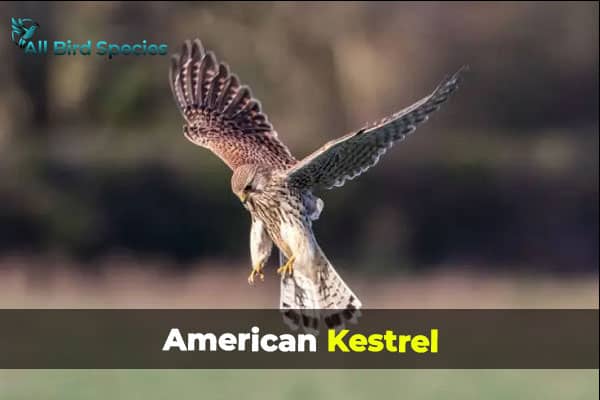
Kestrels primarily feed on insects, but they will also hunt small mammals and birds. Their unique hunting technique involves hovering in place to spot prey, making them fascinating to watch. The American Kestrel’s vibrant colors and agile flight make it a favorite among birdwatchers.
19. Bald Eagle
- Size: 28-40 inches (71-102 cm)
- Weight: 3-6.3 lbs (1.4-2.9 kg)
- Lifespan: 20-30 years in the wild
- Diet: Fish, waterfowl, and carrion
The Bald Eagle is a symbol of strength and freedom in the United States, easily identified by its white head and tail feathers. In Pennsylvania, these majestic birds are often found near large bodies of water, where they hunt for fish. Their impressive wingspan and soaring abilities make them a spectacular sight in the sky.

Bald Eagles primarily feed on fish, but they are opportunistic feeders and will also scavenge carrion or hunt waterfowl. Their nests, often enormous in size, are built high in trees near water sources. The successful recovery of the Bald Eagle population in Pennsylvania serves as a testament to conservation efforts.
20. Merlin
- Size: 10-12 inches (25-30 cm)
- Weight: 5.5-12 oz (155-340 g)
- Lifespan: 5-10 years in the wild
- Diet: Small birds, particularly sparrows and finches
The Merlin birds of Pennsylvania is a small but fierce falcon, known for its speed and agility. These birds are often found in open areas, including fields and coastal regions, where they hunt small birds. Their plumage can vary, but they are generally dark above and lighter below, making them well-camouflaged in their environment.

Merlins are skilled hunters, often pursuing their prey with incredible speed and agility. Their diet primarily consists of small birds, which they catch in mid-air. Observing a Merlin in action is a thrilling experience, as they demonstrate remarkable aerial prowess.
21. Turkey Vulture
- Size: 24-32 inches (61-81 cm)
- Weight: 3-6 lbs (1.4-2.7 kg)
- Lifespan: 10-16 years in the wild
- Diet: Carrion
The Turkey Vulture is a large scavenging bird commonly seen soaring across Pennsylvania’s landscapes. Recognizable by its dark plumage and distinctive red head, these vultures play a vital role in the ecosystem by consuming carrion, which helps prevent the spread of disease. They are often seen gliding effortlessly in the sky, utilizing thermal updrafts to conserve energy.

Turkey Vultures have an exceptional sense of smell, which they use to locate decaying animals from great distances. Unlike many birds, they rely on olfactory cues rather than sight to find food. Their scavenging habits make them an essential part of the food web, helping to clean up the environment.
22. Black Vulture
- Size: 24-28 inches (61-71 cm)
- Weight: 3-6 lbs (1.4-2.7 kg)
- Lifespan: 10-15 years in the wild
- Diet: Carrion, particularly larger animal remains
These Black Vultures birds of prey, similar in appearance to the Turkey Vulture, are often found in the southern and eastern regions of the United States, including Pennsylvania. Unlike its relative, the Black Vulture has a black head and darker plumage. They are known for their social behavior and often roost and feed in groups.

These vultures are opportunistic feeders and will scavenge for carrion, often competing with Turkey Vultures for food. They tend to be more aggressive than their counterparts and have been observed stealing food from other scavengers. Their presence is crucial for maintaining the health of ecosystems by disposing of dead animals.
Read More🐦Related Articles:
- Eagles in Russia
- Red-Tailed Hawk: A Majestic Raptor
- Hawks with White Heads
- Birds With Orange Beaks
- Hawks in Mississippi
- Bluebirds in Indiana
Conclusion
Pennsylvania is rich in avian diversity, particularly when it comes to birds of prey. From the majestic Bald Eagle to the nimble American Kestrel, each species plays a unique role in the ecosystem. These raptors are not only fascinating to observe but also serve as important indicators of environmental health.
The conservation of these birds is vital, as many species face threats from habitat loss, climate change, and pollution. By understanding and appreciating these magnificent creatures, we can help ensure their survival for future generations. Birdwatchers and nature enthusiasts in Pennsylvania are fortunate to witness the incredible adaptations and behaviors of these birds of prey, making the state a great destination for raptor observation and appreciation.

